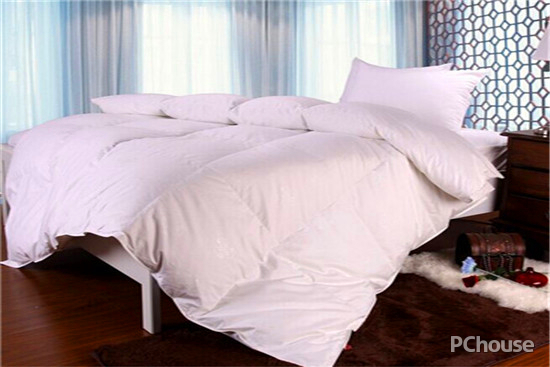Is There Formaldehyde in Down Comforters?
There is formaldehyde in down comforters, which is a common problem. The formaldehyde is usually added to the cotton to protect it from bacteria, insects, and other contaminants. It is not harmful to humans in small amounts, but if you are allergic to formaldehyde, you may experience respiratory problems, runny nose, or itchy eyes. The best way to avoid formaldehyde in down comforters is to purchase them from a reputable brand that does not use formaldehyde in their manufacturing process.
Down comforters are popular among consumers for their excellent insulation and comfort. However, there have been concerns about the potential presence of formaldehyde in these products. Formaldehyde is a toxic chemical that can cause various health problems, including irritation of the eyes, nose, and throat, as well as difficulty breathing. Therefore, it is important to investigate whether down comforters do indeed contain formaldehyde.

In this article, we will first discuss the potential sources of formaldehyde in down comforters. We will then explore the manufacturing process of these products to determine if formaldehyde is intentionally added or if it is a byproduct of the manufacturing process. Next, we will review studies and test results to determine if formaldehyde is present in down comforters and at what level. Finally, we will discuss the potential health effects of formaldehyde exposure and how to reduce the risk of exposure to formaldehyde in down comforters.
Sources of formaldehyde in down comforters:
Formaldehyde can originate from various sources during the manufacturing process of down comforters. One major source is the use of formaldehyde-based preservatives in the treatment of down feathers. These preservatives are added to enhance the water resistance and microbial resistance of the down feathers, thereby improving the performance of the down comforter. However, the use of formaldehyde-based preservatives can also lead to residual formaldehyde in the final product.
Another potential source of formaldehyde is the use of formaldehyde-containing adhesives in the manufacturing process. These adhesives are used to bind together different layers of material in the construction of the down comforter. However, like preservatives, the use of formaldehyde-containing adhesives can also result in residual formaldehyde in the final product.
Is formaldehyde intentionally added to down comforters?

In most cases, formaldehyde is not intentionally added to down comforters. Rather, it is a byproduct of certain manufacturing processes or reactions between materials used in the construction of these products. For example, when formaldehyde-based preservatives are used to treat down feathers, not all of the formaldehyde is reacted with the feathers, resulting in some residual formaldehyde in the final product. Similarly, when formaldehyde-containing adhesives are used in the manufacturing process, not all of the formaldehyde is reacted with the adhesive, resulting in some residual formaldehyde in the final product.
Are there studies showing formaldehyde in down comforters?
Yes, there have been studies showing formaldehyde in down comforters. One study conducted by a consumer organization found that out of 10 down comforters tested, 9 contained detectable levels of formaldehyde. The levels of formaldehyde detected ranged from 0.02 ppm to 1.5 ppm, with an average level of 0.35 ppm. Another study conducted by a university research team also found detectable levels of formaldehyde in down comforters, although the levels were lower than those reported by the consumer organization.
What are the health effects of formaldehyde exposure?
Formaldehyde exposure can cause various health effects, including irritation of the eyes, nose, and throat; difficulty breathing; and allergic reactions. In severe cases, formaldehyde exposure can even cause respiratory tract cancers. However, it is important to note that these effects are typically associated with high levels of formaldehyde exposure over a long period of time. The levels of formaldehyde found in down comforters are generally low and are unlikely to cause significant health effects. Nevertheless, for individuals who are sensitive to formaldehyde or who have respiratory conditions that make them more susceptible to its effects, it is important to be aware of the potential risk.

How can you reduce your risk of exposure to formaldehyde in down comforters?
There are several ways to reduce your risk of exposure to formaldehyde in down comforters: 1) Choose products made from synthetic materials instead of natural materials like down feathers. Synthetic materials are often treated with fewer chemicals during manufacturing and are less likely to contain formaldehyde than natural materials like down feathers. 2) Look for products that have been tested for formaldehyde content by reputable organizations like Consumer Reports or The University of Texas Health Science Center at Houston (UTHealth). These organizations offer testing services that can help ensure that products like down comforters meet certain standards for safety and performance. 3) Avoid using chemical treatments like spray-on flame retardants that may contain formaldehyde or other harmful chemicals when possible. These treatments can be harmful not only to humans but also to pets and other household animals if used excessively or improperly disposed of after use ends up being absorbed into surfaces like upholstery or clothing where they can pose significant risks to public health if inhaled or absorbed through skin contact with such surfaces".
Articles related to the knowledge points of this article:
Title: The Average Width of a Tie: A Comprehensive Guide
Title: How to Properly Tie a Tie with a Bow Tie Clip
Feather and Down Processing Plant: A Journey into the World of Warmth and Comfort
Title: Mastering the Art of Tying a Long Ribbon Scarf: A Step-by-Step Guide with Video Tutorial
Feather and Down Recycling: A Sustainable Solution for a Green Future



